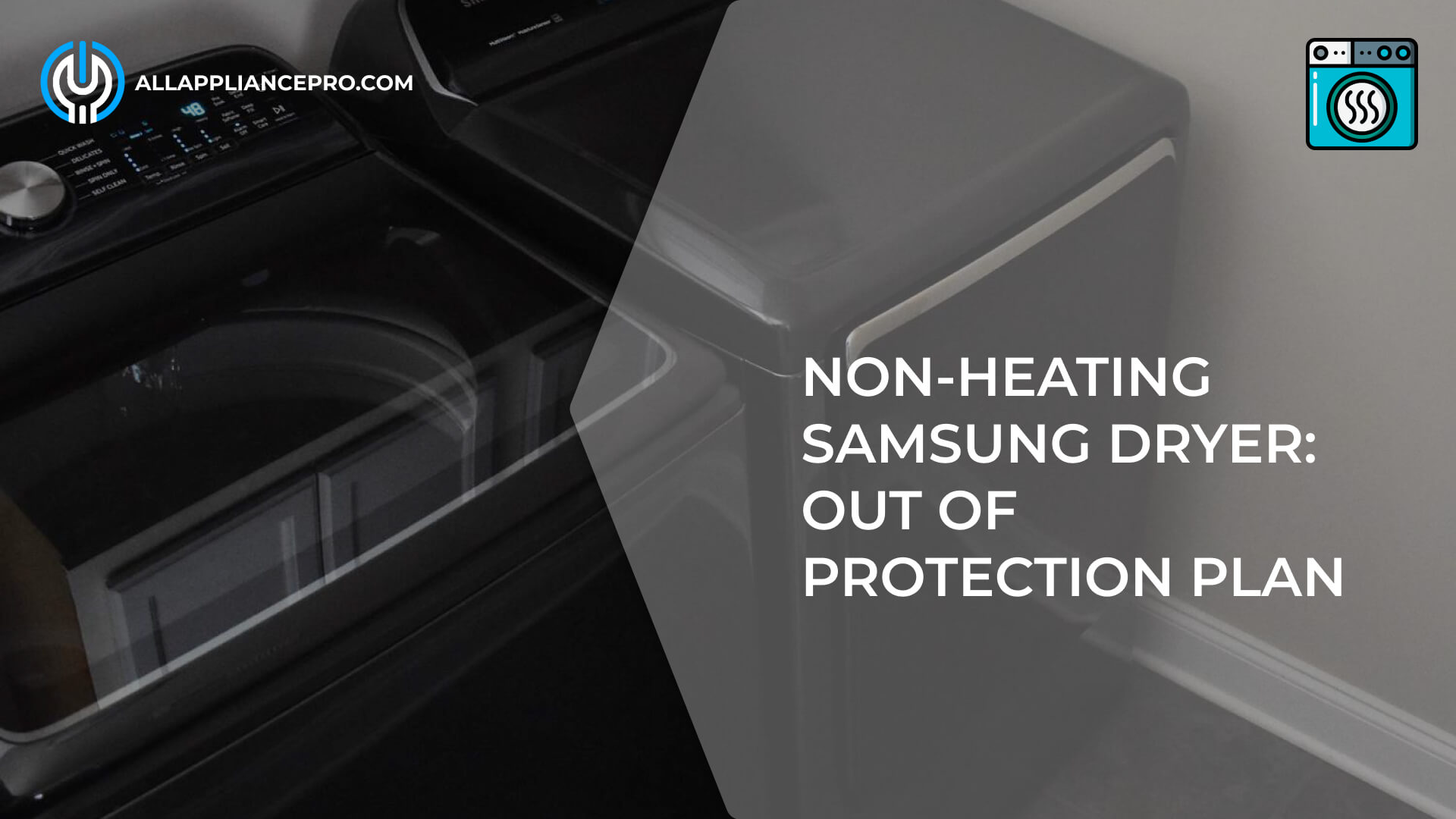Non-Heating Samsung Dryer

A non-heating dryer can be a significant inconvenience, especially when your Samsung dryer fails to produce the necessary heat to dry your clothes. To compound the issue, if your 3-year protection plan has expired, you may feel stranded without a solution. However, fear not, as we delve into the possible causes and troubleshooting steps to rectify the situation.
Common Causes of a Non-Heating Samsung Dryer
When faced with a Samsung dryer that is not producing heat, it's essential to understand the common causes behind this issue.
Thermal Fuse Failure
One possible cause of a non-heating Samsung dryer is a faulty thermal fuse. The thermal fuse is a safety component that shuts off the heating element if the dryer overheats. If the thermal fuse is blown, it will disrupt the heating process. To check the thermal fuse, locate it within the dryer's housing and test it for continuity using a multimeter. If the thermal fuse is defective, it will need to be replaced.
Heating Element Malfunction
Another potential cause of a non-heating dryer is a malfunctioning heating element. The heating element is responsible for generating the heat required to dry your clothes. Over time, the heating element can wear out or become damaged, leading to a lack of heat. Inspect the heating element for any visible signs of damage or use a multimeter to test its continuity. If the heating element is faulty, it should be replaced.
Gas Supply Issues (for gas dryers)
For gas dryers, an inadequate gas supply can result in a lack of heat. Ensure that the gas supply valve is fully open and that there are no blockages or leaks in the gas line. Additionally, check the igniter, gas valve solenoids, and flame sensor to ensure they are functioning correctly. If you suspect a gas supply issue, it is recommended to seek professional assistance for proper inspection and repair.
Troubleshooting Steps for a Non-Heating Dryer
Once you have identified the potential causes of the non-heating issue, it's time to troubleshoot and attempt to resolve the problem.
Checking the Thermal Fuse
If the thermal fuse is suspected to be the cause, turn off the dryer and unplug it from the power source. Locate the thermal fuse, usually found near the heating element, and remove it for testing. Using a multimeter, check the fuse for continuity. If there is no continuity, the thermal fuse is likely blown and needs to be replaced. Consult the dryer's manual or contact Samsung for guidance on obtaining the correct replacement part.
Testing the Heating Element
To test the heating element, disconnect the dryer from the power source and locate the heating element. Inspect it for any visible signs of damage such as broken coils or burned areas. Using a multimeter, test the heating element for continuity. If there is no continuity, the heating element is faulty and should be replaced. Again, consult the dryer's manual or contact Samsung for assistance with obtaining a compatible replacement.
Verifying Gas Supply (for gas dryers)
If you have a gas dryer and suspect a gas supply issue, start by ensuring that the gas supply valve is fully open. Check for any blockages or leaks in the gas line. If everything appears normal, consult a qualified technician who specializes in gas appliance repair. They will have the necessary expertise to inspect the gas supply components, such as the igniter, gas valve solenoids, and flame sensor, and make any necessary repairs or replacements.
Conclusion
Dealing with a non-heating Samsung dryer can be frustrating, especially if your protection plan has expired. However, there are several troubleshooting steps you can take to identify and potentially resolve the issue. By examining common causes such as a faulty thermal fuse, malfunctioning heating element, or gas supply issues (for gas dryers), you can narrow down the problem and determine the necessary repairs or replacements. Remember, while your protection plan may have expired, there are still options available to restore the functionality of your Samsung dryer.


